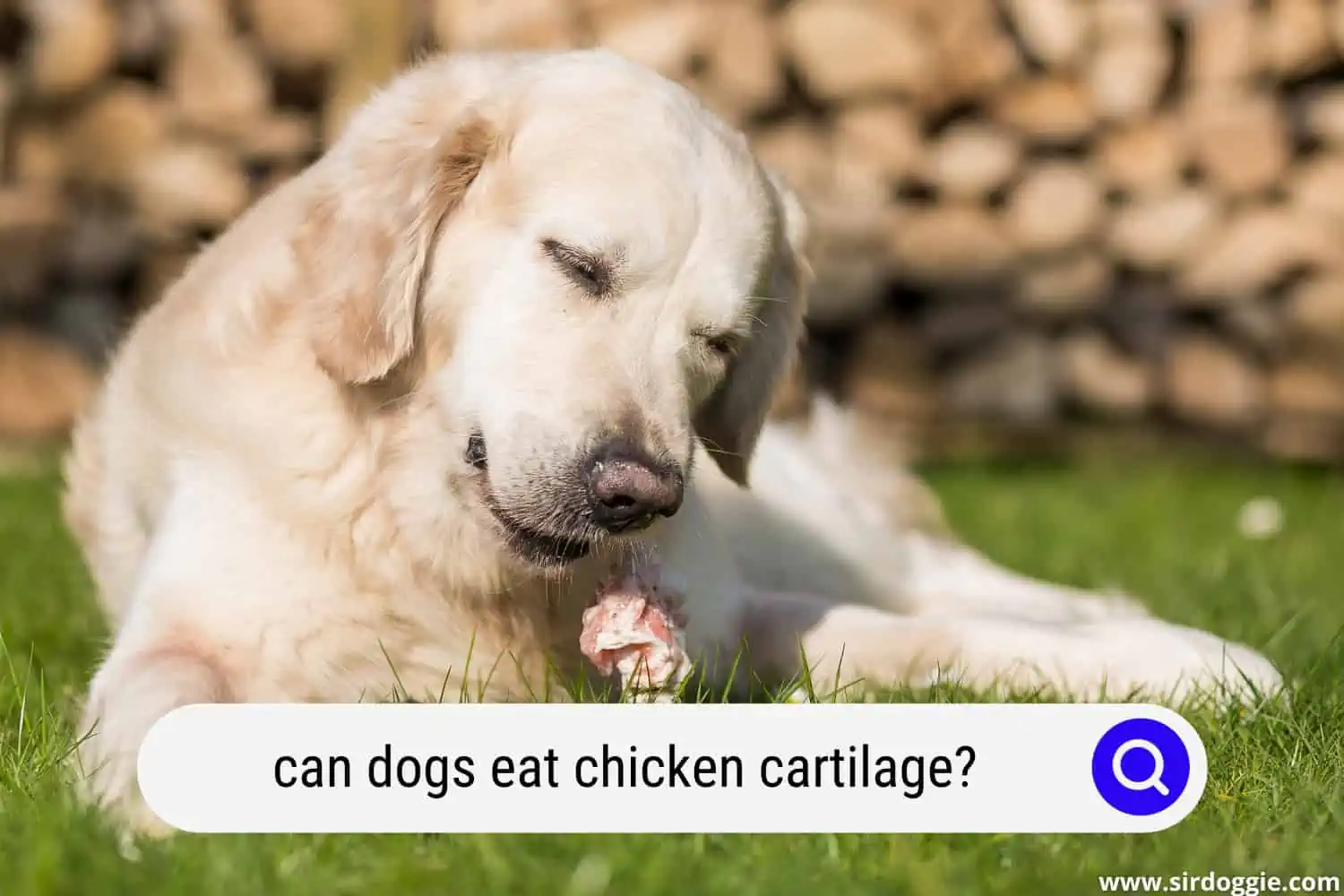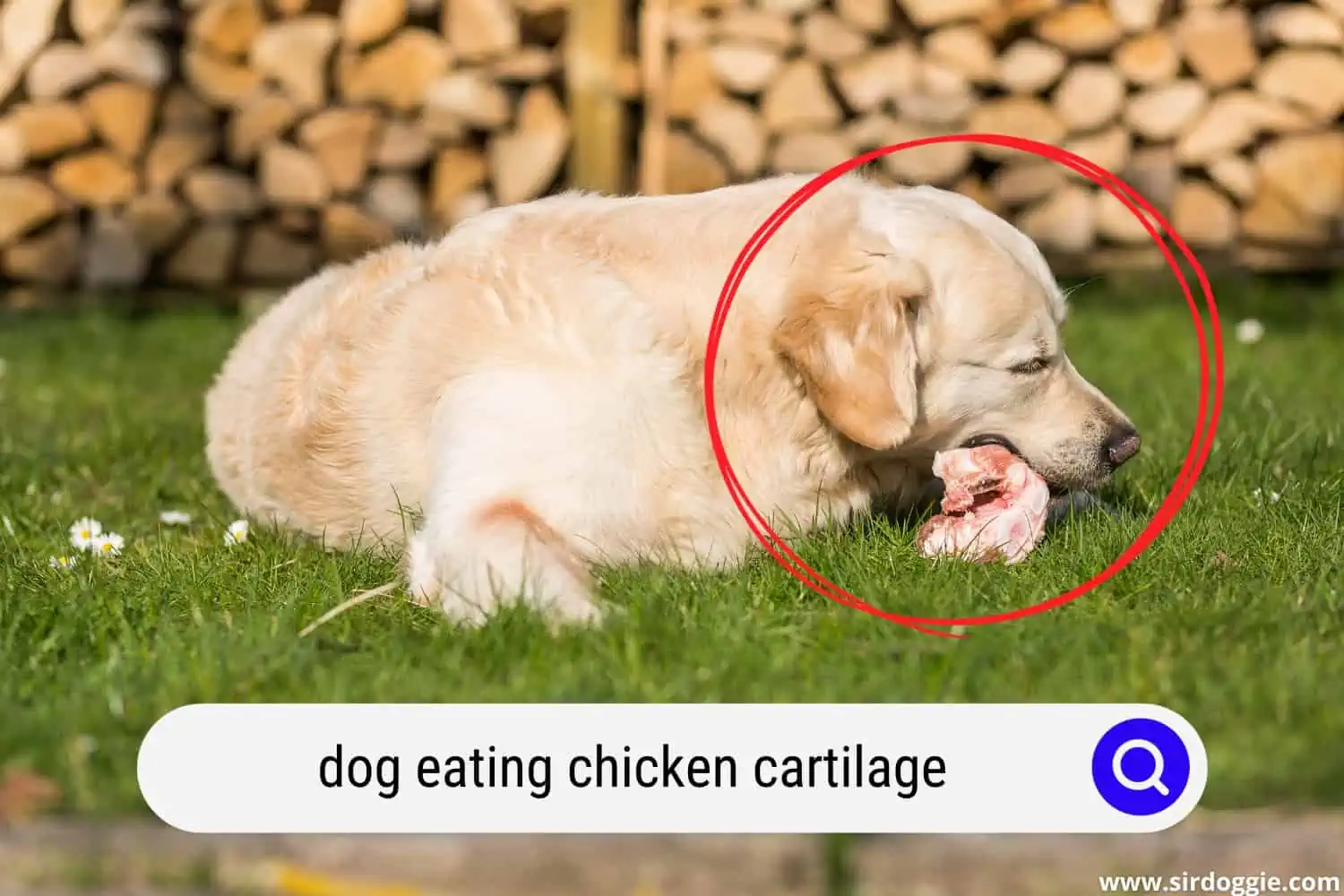Can Dogs Eat Chicken Cartilage? Here is the Answer!
A dog gnawing on a bone seems like the most natural thing in the world. Dogs chew them up, bury them, and save them for later. Dogs are also happy to chew on cartilage, but in an era where many pet owners are concerned about the safety of dog chews, is this a safe practice?
Can dogs eat chicken cartilage? Is it safe? Yes, it’s definitely safe for your dog to eat chicken cartilage, and here’s why. Cartilage contains large amounts of glucosamine, which is a supplement for arthritis. While you can buy your dog glucosamine supplements to support his joints as he ages, cartilage is a great way to ensure his joints remain in good health all the time. Chicken feet are one of the best sources of glucosamine available, and they are composed of over 30% cartilage.
Cartilage is good for your dog’s bones and good for his dental health as well. It cleans out bits of food and nasty bacteria between his teeth that can cause gum disease and tooth decay. While it’s good to give your dog cartilage, there is a way to do it safely because there is a potential risk of just letting your dog chew on a raw chicken bone.

Should dogs eat raw or cooked chicken cartilage?
Dog owners who like to give their dogs bones from the dinner table won’t like the answer to this question. Feeding a dog cooked bones can be dangerous. Because of this, it’s becoming increasingly common for dog owners to feed raw foods, bones, and cartilage to their canine companions.
There are numerous reasons why you shouldn’t feed cooked pieces of bone to your dog, beyond simple owner preference.
- Cooked bones are brittle and can splinter inside your dog’s mouth, throat, or digestive tract. Not only can this cause them to get cut or break a tooth, but these splinters can also get “stuck” and require life-saving surgery.
- Your dog can choke on small chunks of bone.
- The stomach can be perforated by bone splinters, leading to serious gut infections. If this happens, it can be fatal to your dog.
- Bone fragments that can’t pass through your dog’s stomach to the intestine can require surgery to remove.
- Passing sharp bone splinters can cause rectal bleeding.
- Cooked, smoked, or baked bones can all cause the same issues.
While you can grind cartilage up and put it into your dog’s food to reap some of the health benefits in a safe way, doing this doesn’t give your dog the dental health benefits from chewing.
What type of bones and cartilage should dogs eat?
Raw bones and cartilage provide your dog with valuable minerals, clean his teeth, and satisfy his natural chewing instincts.
The best bones and cartilage to feed your dog raw are chicken bones. Any other type of poultry is good as an alternative, but chicken bones are the healthiest.
Your dog should eat small flexible bones that are easy for him to chew and digest. Chicken feet are made up of about 30% cartilage, which is about 5% glucosamine. Each chicken foot contains approximately 450 mg of glucosamine, making chicken feet a healthy treat for your dog. Gnawing on chicken feet will clean your dog’s teeth at the same time. You can buy chicken feet at farmer’s markets, butcher shops, grocery stores, and Asian markets.
Can dogs eat chicken frames?
Chicken frames are the best carcasses to feed to your dog. Their odd shape means that it will take your dog a long time to chew through them and they contain large amounts of cartilage, making them healthy too.
If you choose to feed your dog a whole chicken frame, make sure to remove the neck. The neck can be easily broken up by larger dogs, so they should only be fed to cats or small dogs who will spend a long time chewing.
Are chicken frames good for dogs?
There are many health benefits to feeding chicken frames, particularly because there is a large volume of cartilage in a single frame. Chicken frames can be fed as a treat for your dog, a few times a week, as part of a healthy, balanced diet.
Feeding chicken frames too often provides your dog with an excess amount of calcium, which can lead to constipation and intestinal blockages. This is a particular concern in puppies, who need a properly balanced calcium-to-phosphorus ratio to support proper growth.
As with all bones and cartilage, chicken frames should be fed raw rather than cooked to ensure their safety and avoid bone splintering. Otherwise, feeding your dog whole chicken frames can have immense benefits for their gums, teeth, and joints.
What are other types of cartilage safe for dogs?
Chicken feet aren’t the only safe type of cartilage for your dog. The beef trachea is also made primarily from cartilage. A 30-gram chunk of the beef trachea has about 1,400 mg of glucosamine. For comparison, a medium-sized arthritic dog would be prescribed approximately 1,000 mg of glucosamine supplements for joint and bone pain.
There are multiple benefits to allowing your dog to chew on a beef trachea. In addition to its high glucosamine content, the beef trachea is high in protein and low in fat, making it a nice healthy treat. Of course, because your dog chews on it, it also promotes his dental health.
Other sources of glucosamine-rich cartilage that are safe for your dog to consume are pig tails, pig ears, duck feet, duck necks, turkey necks, and lamb necks. These can be more difficult to find but are available in many pet stores.
If you are feeding your dog poultry feet, pork tails, or pig ears, watch out for signs of stomach upset. Treats should be limited to once per day and no more than a few times a week to ensure your dog isn’t bothered by the extra high-fat, high-protein content of these chews.
Tips on feeding bones and cartilage to your dog
- Don’t offer your dog a bone when in the company of other canines or humans, as it can trigger possessiveness
- Never leave your dog with a bone unsupervised. If your dog does have a choking episode, you want to know right away.
- Large dogs like German Shepherds or Mastiffs should be given larger bones to avoid them trying to swallow a smaller bone whole.
- Dogs with flat noses like bulldogs or boxers should be fed bones with caution. They sometimes have a hard time chewing on them.
- A good rule of thumb for choosing an appropriate bone size for your dog is that it should always be bigger than his muzzle.
Final thoughts
Chicken cartilage (or any cartilage for that matter) is safe for your dog to eat. Cartilage is a fantastic source of minerals, including glucosamine. For safety, make sure you always give your dog raw bones as cooked bones can splinter and become dangerous.
Giving your dog a bone to chew on a few times a week is a great way to support his mental health and relieve boredom. Dogs need to satisfy their natural chewing instincts. Giving them something appropriate to chew on will prevent this chewing instinct from being taken out of your shoes.

Related questions
Can dogs eat chicken tendons?
Tendons are safe to give to your dog as a treat. They are readily available and separated from meat that is commercially produced for human consumption. Because they are often twisted into a corkscrew shape before they are sold, they do a great job of cleaning your dog’s teeth.
What types of bones are safe for dogs?
Chicken bones or bones from other types of poultry are safest. Quail, turkey, rabbit, lamb, and even kangaroo bones (if you live in Australia) are safe. Beef bones are also safe.
There’s significant debate about the safety of pork bones, but they are just as safe as chicken.
What types of bones are best?
Small flexible bones are the easiest for your dog to chew and digest. Chicken wings are a preferred option, and chicken legs are also good. If you’re looking to keep your dog busy for a while, whole, raw chicken carcasses are safe.
Beef brisket bones, breast bones from cows, and cow tracheas are primarily composed of cartilage and are safe for your dog.
If you are feeding a lamb, the best parts for your dog are necks and rib flaps.
Pork bones are very thick and difficult for dogs to chew; they pose a risk of your dog cracking his teeth. On the other hand, Ribs are very easily cracked by larger dogs, so they should be fed with caution. If you have a small dog who will chew on them for a long time, they are safe for consumption.

Family Dog Expert Author
Hi there! I’m Stuart, a devoted dog lover and family dog expert with over a decade of experience working with our furry companions. My passion for dogs drives me to share my knowledge and expertise, helping families build strong, loving bonds with their four-legged friends. When I’m not writing for SirDoggie, you’ll find me hiking, playing with my beautiful dog, or studying music.